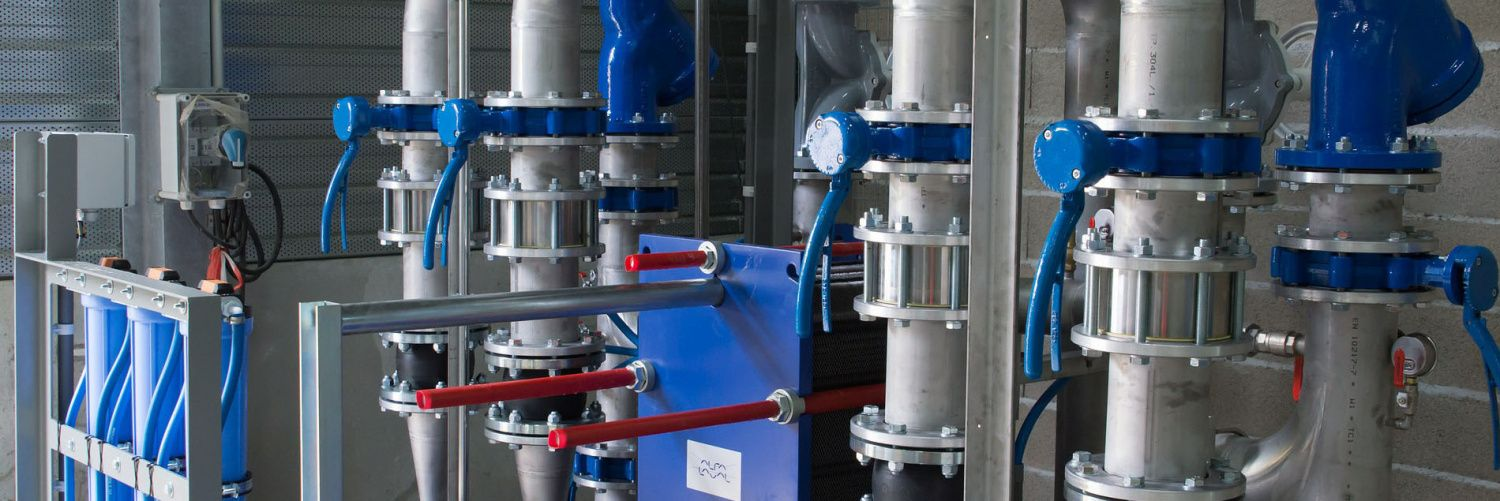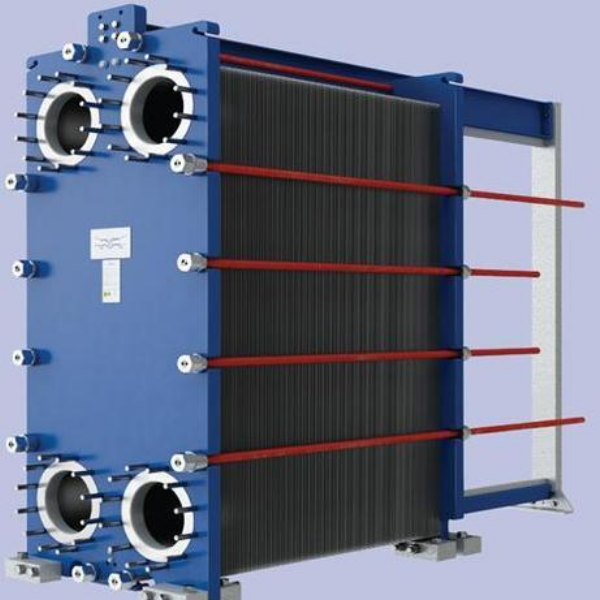____________________________________________________________________________________
The effect that the pressure drop parameter has when choosing heat exchange equipment
Basic requirements for plate heat exchanger in utility networks
The main requirements for plate heat exchanger common in utility networks (housing and communal services) are its energy efficiency, minimal negative impact on the environment and the ability to have a positive effect on operating costs.
We note that one of the most noticeable components of operating costs in heat supply systems is the cost of pumping the coolant in the circulation ring of heating networks. There are two ways you can minimize them:
- Reducing the pressure drop between the supply and return heat pipes
- Also, Providing low return water temperature
Further, having considered both alternatives for the plate heat exchanger, we will see how the imaginary savings at the stage of calculating the power of the equipment and the difference in the interpretation of calculation options can negatively affect the operating costs of the customer.
Pressure loss in heat exchanger
Are the specified indicators of heat output and temperature being in the supply and return heat pipelines on the side of the heating medium.? As well as on the side of the heated medium, sufficient parameters when calculating heat exchange equipment in? Of course, no.
Meanwhile, as a rule, to reduce circulation costs, the components of thermal systems (pipes, bends, filters, valves, thermal expansion joints, plate heat exchangers, etc.) are calculated based on the minimum pressure loss.
In district heating networks (plate heat exchanger), when there are variable temperatures and flow rates of the coolant, the cost of circulating the coolant both in the primary and secondary circuits is proportional to the change in flow in the corresponding circulation rings during the heating period.
Pressure loss reduction in heat exchanger
The level of pressure loss reduction in heat exchange equipment depends on the decrease in flow through it. Consequently, pressure losses are proportional to the square of the speed of movement (flow rate) of the coolant.
In other words, assuming the equipment is operating at half the load, the actual pressure loss in it will be equal to 25% of the calculated one. Developing the example with plate heat exchanger, selected for the heating system, subject to the limitation of the calculated pressure loss in it at the level of 30 kPa.
We understand that under the condition of working with half the peak flow rate of the heat carrier. The actual pressure loss will be equal to 7.5 kPa; at a flow rate of 1/3 of the peak - 3 kPa. Consequently, the operating costs will be proportionally reduced.
Return heating medium temperature
This is a critical parameter in district heating networks. The lower the return heat medium temperature, the higher the amount of energy. It is easy to transfer with the same amount of heat carrier.
Accordingly, the more efficient the plate heat exchanger that transfers energy from one medium to another, the more energy can be taken from the heating water, while maximizing the temperature difference between the supply and return heat pipelines.
The logical conclusion of these theoretical studies is the search for tools for a guaranteed qualified selection of heat exchange equipment for district heating systems under conditions of operation with variable loads.
Main conditions for having best approach in heat exchanger
According to our experts, the main conditions for a thoughtful approach to the selection of heat exchange equipment. This meets the real needs of the customer are complete transparency of calculations, guaranteed declared heat exchange capacity.
Moreover, a comprehensive understanding of the total costs of plate heat exchanger is already at the start of the project. As already noted, the peak loads for which the equipment is matched can occur in less than 5% of the equipment. Moreover, it’s operating time during the year.
In this regard, it is very difficult for the end user on whose balance sheet it is to determine the real effect that variable loads have on operating costs. Often the customer finds out about it already upon receipt of electricity bills.
Condensate heat recovery
This is one of their technological processes. This involves two simultaneous actions: cooling the high temperature condensate and heating the liquid that feeds the boiler. In this case, plate heat exchanger is common as part of an installation for heating water. It comes both in rather small economic enterprises and in large industries.
These processes - heating the liquid for the boiler and cooling the condensate - are the main ones in the field of mechanical engineering. And they do not limit the scope of use of heat exchangers. In addition, such devices can also be common in cooling and heating processes for:
- First, maintaining the required temperature regime for technological solutions
- Second, these could be of different purpose, ensuring operation of rolling and cutting devices
- Lastly, maintaining the set temperature of the quenching oil and anodizing solutions
Reducing the temperature of welding equipment
To solve this problem (mandatory for the engineering industry), a plate heat exchanger is commonwith the possibility of installation in closed-type systems. We are now highlighting cooling and heating of galvanic oils.
In this case, we are talking about important technological processes, in which it is important to accurately observe the specified temperature regime. Most often, these actions are inseparable from each other.
This means that initially, galvanic oils are heated in a collapsible type heat exchanger, and after that, they are cooled in adjacent additional containers. In this case, this equipment is installed in closed circuits.
Three processes for collapsible heat exchangers
1-Heating of technical fluids
Service fluids are those that are common to coat the outside of parts (process lubricant). This process can involve two types of heat exchangers
2-Brazed or collapsible.
Their task is to heat the solution to the required temperature, which will allow external application.
3-The heat carrier in this case is steam
Through the continuous circulation of which the temperature maintain at the proper level.
In mechanical engineering, for certain functions of plate heat exchanger; air-type heat exchangers and “tube-in-tube” types can also use.






